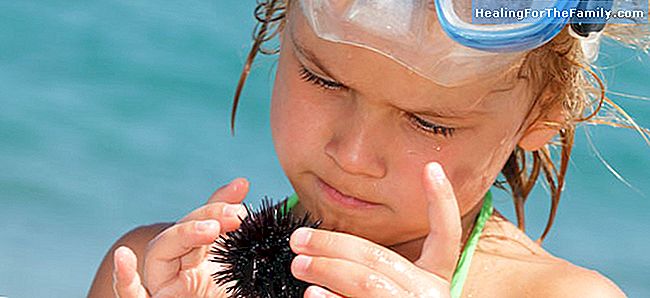Stings in the sea to children, how to act in each case?
Bathing in the sea is one of the greatest pleasures one can experience, provided it is done with due caution. The main thing to use common sense, besides respecting the indications, flags and signs enabled in this regard. However, it is advisable to know how to act in the face of the bites of some a
Bathing in the sea is one of the greatest pleasures one can experience, provided it is done with due caution. The main thing to use common sense, besides respecting the indications, flags and signs enabled in this regard. However, it is advisable to know how to act in the face of the bites of some animal species, resident in this aquatic environment.
How we should act before the different bites in the sea that children can suffer, knowing their treatment will help us to remedy the disorder that they cause.
What to do when children are stung at sea

Medusa sting
Most stings occur in the arms and legs, have a linear shape ("in a whip"), and lack clinical severity. Typical symptoms are itching and local pain. After a jellyfish sting, wash the injured area with salt water. Next, you have to observe the bite, in case there is a tentacle stuck in it. If this circumstance occurs, it must be extracted with a clamp (previous use of gloves). The anaphylactic reaction is very rare. It is discouraged to apply urine on the area: this is a very widespread practice that offers no health benefit.
Pout bite
It is also known as escarapote, pout or spider fish. It is a fish that is hidden under the ground, near the beach. It is typical of some areas of cold waters, such as those of the North of Spain. The sting occurs when we step on the back of the fish; this fact causes the fish to "shoot" three quills. The treatment consists of: washing with salt water, removing the thorns with tweezers and applying local heat (for example, it is useful to walk on the dry sand of the beach). If the pain persists, we recommend taking a conventional analgesic (paracetamol, ibuprofen, metamizole).
Sea urchin bite
If you step on a sea urchin, the area must be washed with salt water. Next, the incised tines must be removed with tweezers. Then, it is advisable to apply an ointment with corticosteroids for several days, to reduce local inflammation.
Anemone Sting
In some areas they are known as "sea orthopallas". They are invertebrate animals similar to jellyfish. The contact with its tentacles generates the appearance of wheals and, consequently, itching and redness of the skin. You have to wash the lesion with seawater. If the itching persists, an oral antihistamine should be administered.
Sea tomato bite
Its scientific name is "actíneas". They are present in the rock areas of the coasts. Their color is reddish, which is why they attract children's attention. If the child suffers a bite in the sea of this marine animal, we must know that the contact with the skin generates transient itching and redness.
Stingray sting
Manta rays are generally harmless animals. The bite occurs when we contact accidentally step one of them. To treat your bite, wash the wound with salt water, and then advise local heat (either by inserting your foot in hot water, or by putting your foot in the warm sand of the beach). It is also advisable to apply an antibiotic cream or ointment, because of the risk of developing a secondary infection. Serious allergic reactions are infrequent.












